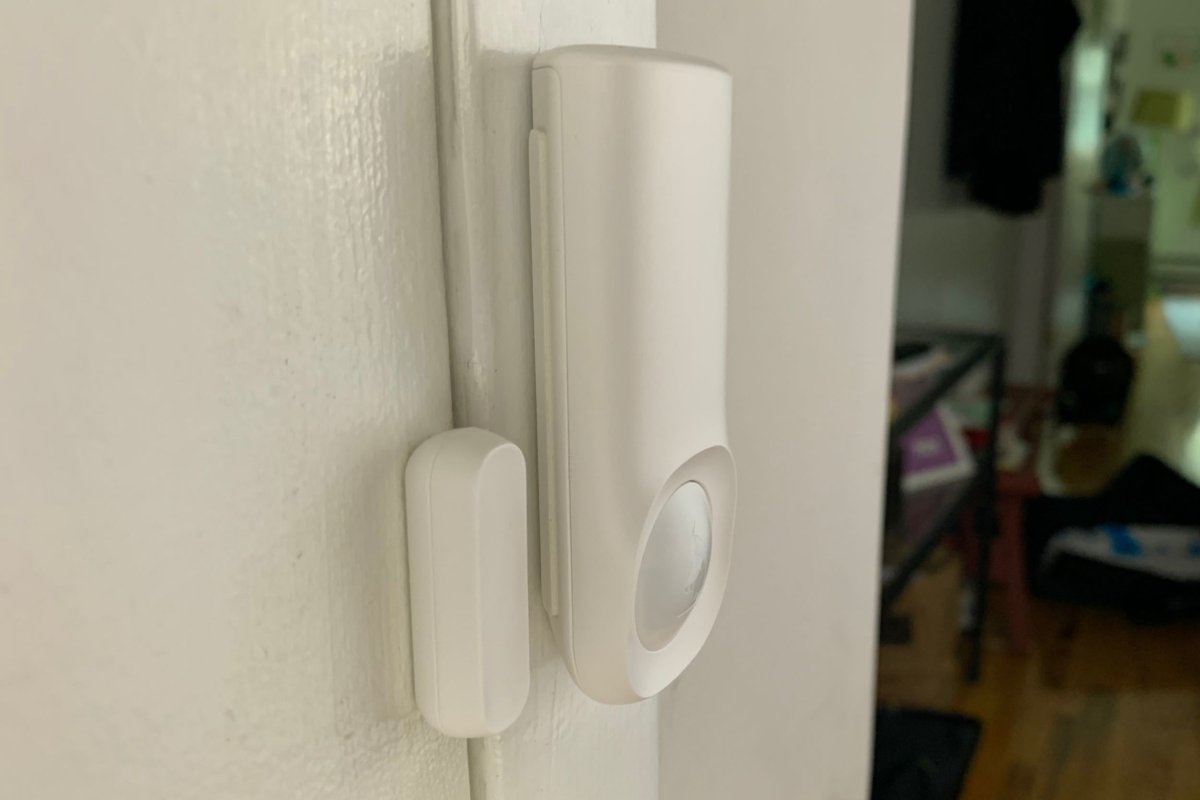
It’s one factor to snap up an inexpensive Bluetooth speaker or a bargain-basement set of earbuds, however skimping on a house safety system not often makes for an excellent deal, and the Kangaroo Motion + Entry Sensor is a working example.
Kangaroo’s new sensor (we’ve beforehand reviewed its motion-only sensor) makes for an attractive alternative given its no-tools, no-hub setup, to not point out its $30 price ticket. The key profit to this new mannequin is that it might probably detect whether or not a door or window is open or closed, along with detecting movement. But with out a digital camera within the ecosystem—or the power to sync with a third-party lens—Kangaroo’s Motion + Entry sensor solely gives a sketchy image of what’s occurring in your house.
Installation and setup
On the constructive aspect, the Kangaroo Motion + Entry Sensor is (for probably the most half, anyway) a snap to set up, requiring only some minutes and no instruments.
The first step is to put in the Kangaroo app onto your Android or iOS smartphone. Once that’s finished, the app prompts you to set up a brand new system, a course of that includes pulling a yellow plastic tab out of the AA battery-powered sensor and tapping the Find Devices button on the app. Once the Bluetooth-enabled sensor is paired with the app (it occurred for me in a matter of seconds), the app walks you thru the small print of connecting the sensor to your Wi-Fi community.
While the Bluetooth pairing course of was pretty easy, I had just a few hiccups connecting the Kangaroo sensor to my Wi-Fi. The system had no bother detecting my community, nevertheless it saved insisting that one thing was fallacious with my password. After some backwards and forwards with tech help, it turned out that the two.4GHz-only Kangaroo sensor was getting tripped up by my dual-band Wi-Fi router. The answer—making a separate 2.4GHz community only for the sensor—is an annoying workaround.
Once the sensor has efficiently linked to Wi-Fi, the app guides you thru the method of putting in each the indoor-only sensor and a small magnet (which is encased in a plastic shell) in your door or window. Kangaroo recommends putting the peel-and-stick sensor about 4 ft off the ground, whereas the magnet needs to be proper subsequent to the sensor, with no more than a 0.6-inch hole between the 2. A blue mild on the sensor activates when the magnet is in vary, and the app prompts you to open and shut your door or window in addition to stroll in entrance of the movement detector to ensure all the pieces is working correctly.
 Ben Patterson
Ben PattersonThe Kangaroo Motion + Entry Sensor doesn’t require any instruments to put in.
While we’re typically leery of adhesive backings on the subject of movement sensors, the 2 Kangaroo units I put in stayed securely fixed to my entrance and basement door frames all through my testing. If you would like, you’ll be able to safe the sensor a bit of more tightly utilizing the included mounting screw.
Finally, you’ll want to call every of your sensors (“Front Door,” “Back Door,” and so on.) after which fill within the salient…
https://www.techhive.com/article/3407763/kangaroo-motion-entry-sensor-review.html#tk.rss_all















